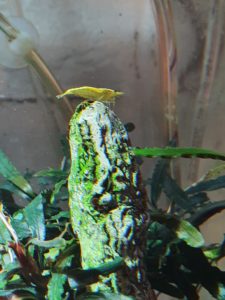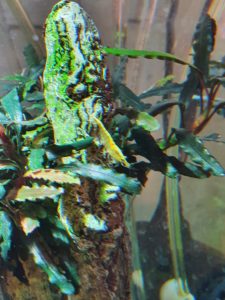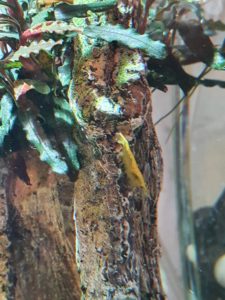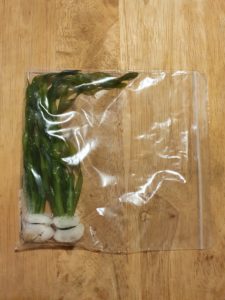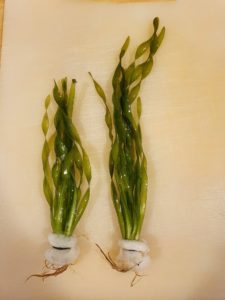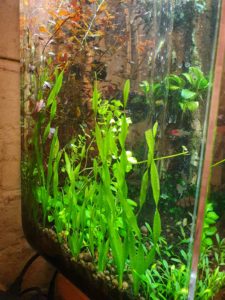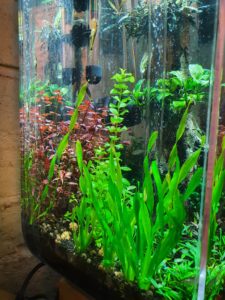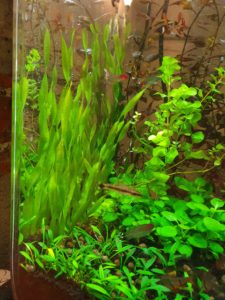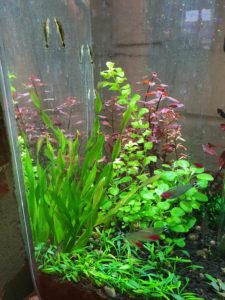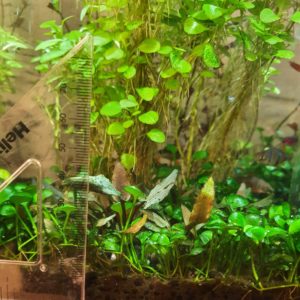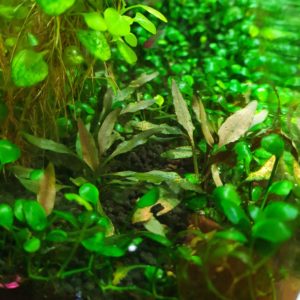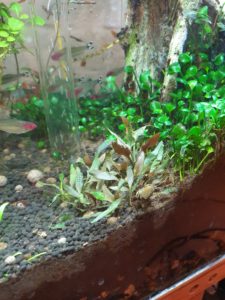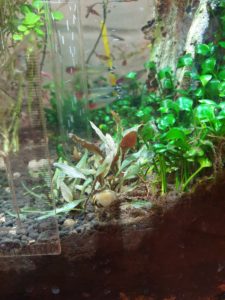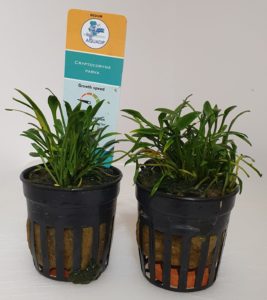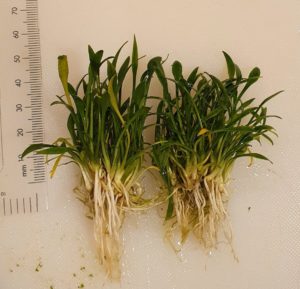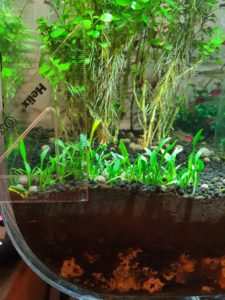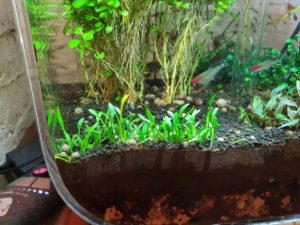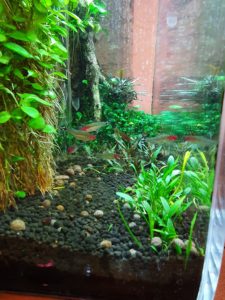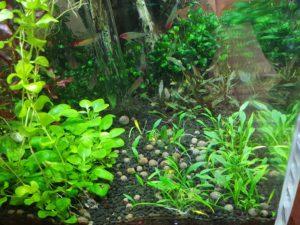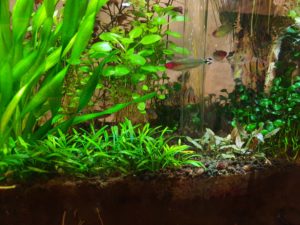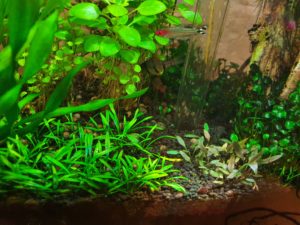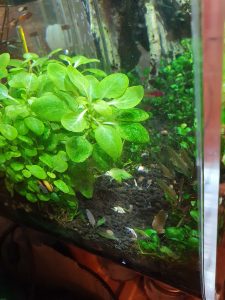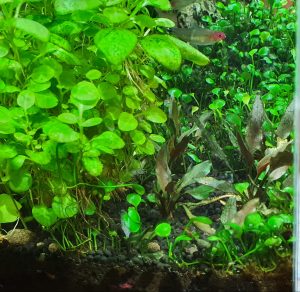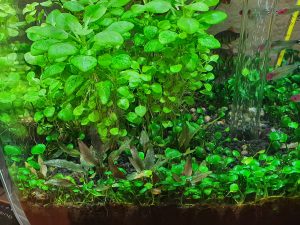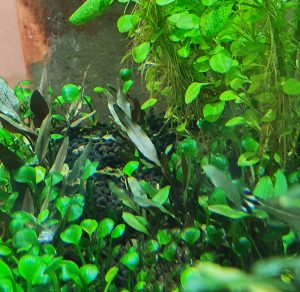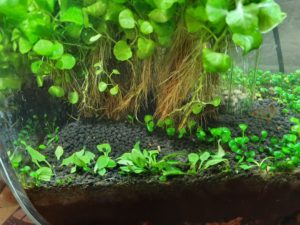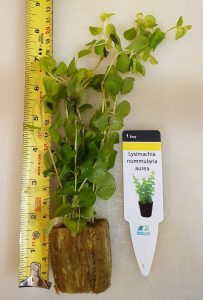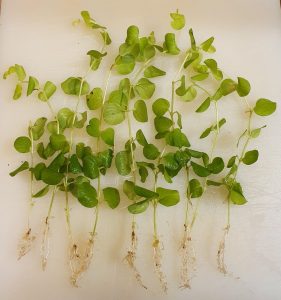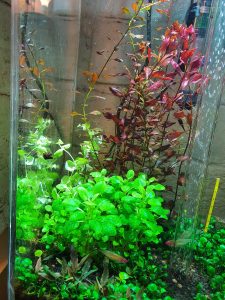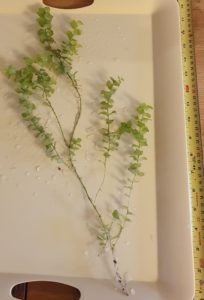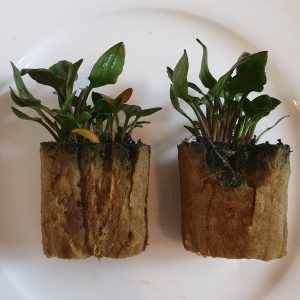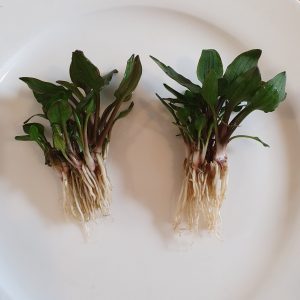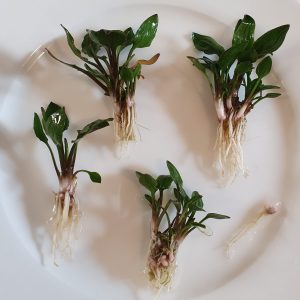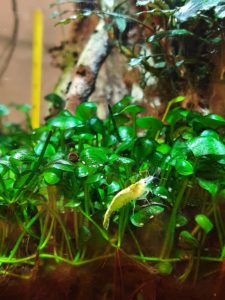
Neocaridina davidi are small freshwater shrimp and very popular for tropical aquaria. These come in many different vibrant colours, most commonly a bright red usually referred to as ‘cherry shrimp’, but they can also be blue, orange, chocolate, white, black, green and several with alternating block patterns of colour. Looking some something that would be easy to spot, I picked up seven bright yellow goldenback ones from Pro-Shrimp. As is usual in the trade, there are no official designations and other names for these include Yellow Shrimp, Yellow Sakura, Yellow Fire Neon, Super Yellow etc.
I wasn’t sure how well live shrimp would travel in the cold weather, but they all arrived in just fine condition. Although neocaridina can live in just about any type of water conditions, they can go into ‘shock’ when those conditions change so there is a drip acclimatisation method for getting them gradually used to new water chemistry. I confess to having done a somewhat abbreviated version of this with maybe some slight trauma, but haven’t noticed any casualties.
I thought these bright yellow shrimp would be easy to spot, but when they’re hiding they are not! There are lots of great hiding places in the Fireplace Aquarium including a quite dense carpet of Marsilea hirsuta on the right side. Word is shrimp can be quite shy for days or even weeks after being introduced to a new environment. Usually I don’t see any at all but I did at one point several days after adding them see three at the same time so I’m pretty sure they’re mostly in there somewhere. None of the fish or the amano shrimp either have ever taken any notice of the new yellow shrimp arrivals.
I wanted to get some more liveliness in the Fireplace Aquarium, but I’m cautious to not have excessive bioload in the tank where adding more fish could be questionable. Shrimp are the perfect choice since they are ominvores and graze on detritus/biofilm without adding much (any?) bioload. Neocaridina are reputed to be prolific breeders so we’ll see what happens to the population even though I’m taking no measures to attempt to optimise the water conditions for shrimp breeding.
Fish ate all the yellow shrimp!
Well crap! At first it looked like everyone was getting along, but then I noticed some very suspicious tear-the-shrimp-apart behaviour from the barbs particularly. I did then see what I think was a shrimp being torn apart; I think the barbs start it and then the rummys join in once the shrimp is pulled into the open. Now there are none left; I’m pretty sure they’re not simply hiding.
I think this is a size thing. The neocaridina as received were quite small, on the order of 1 cm or maybe even a little less, which I suspect triggers the “this is food” instinct in the fish. The amanos however have always been completely unbothered by the fish, but they are also quite a big bigger. Even the smaller male amanos are probably getting up towards 2 cm where I guess they can take care of themselves. I might try some neocaridina adults to see if that flies. Consensus on the interwebs seems to be that other than the completely benign otto catfish, all other fish are a risk to shrimp in at least some degree.
